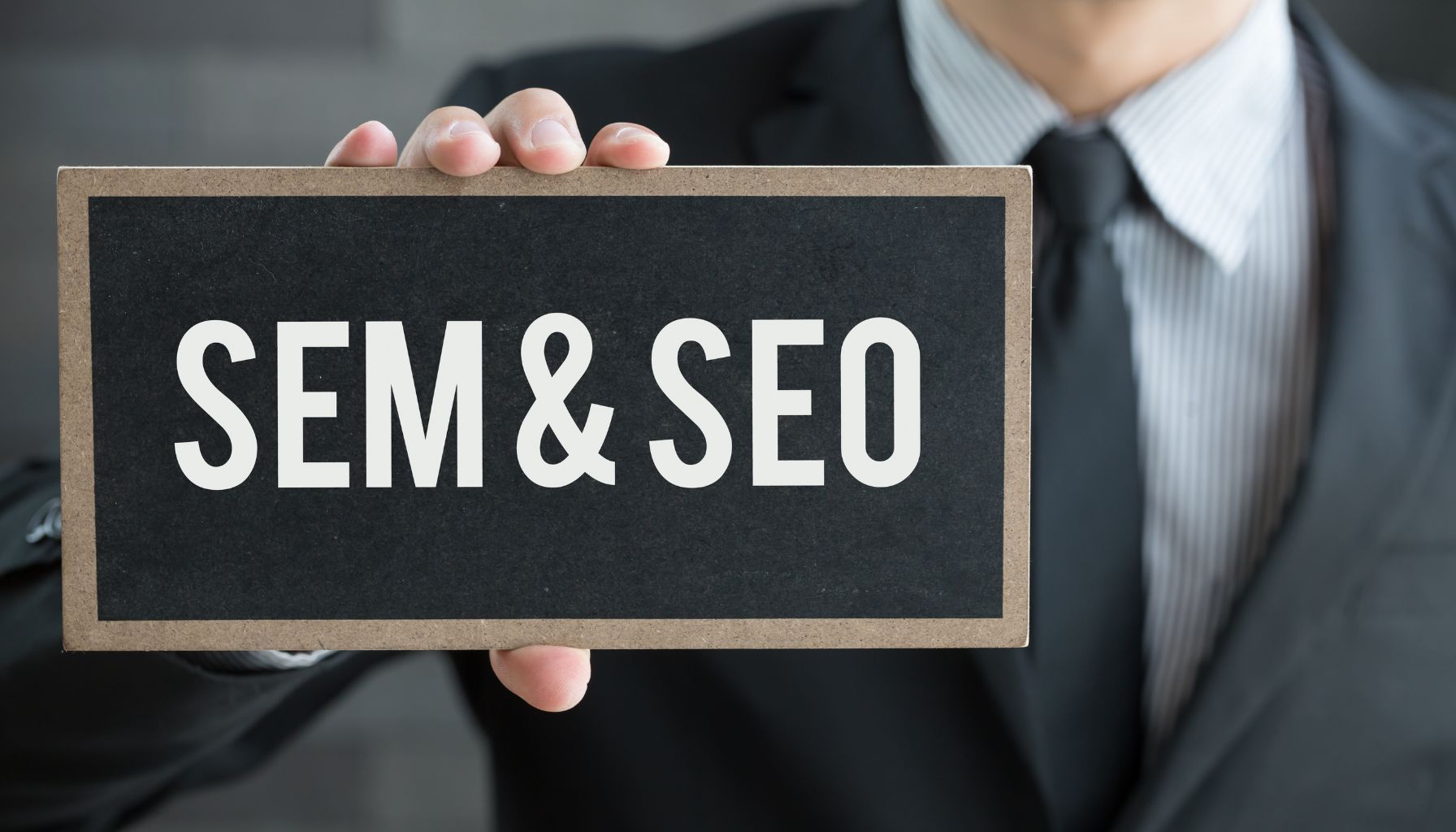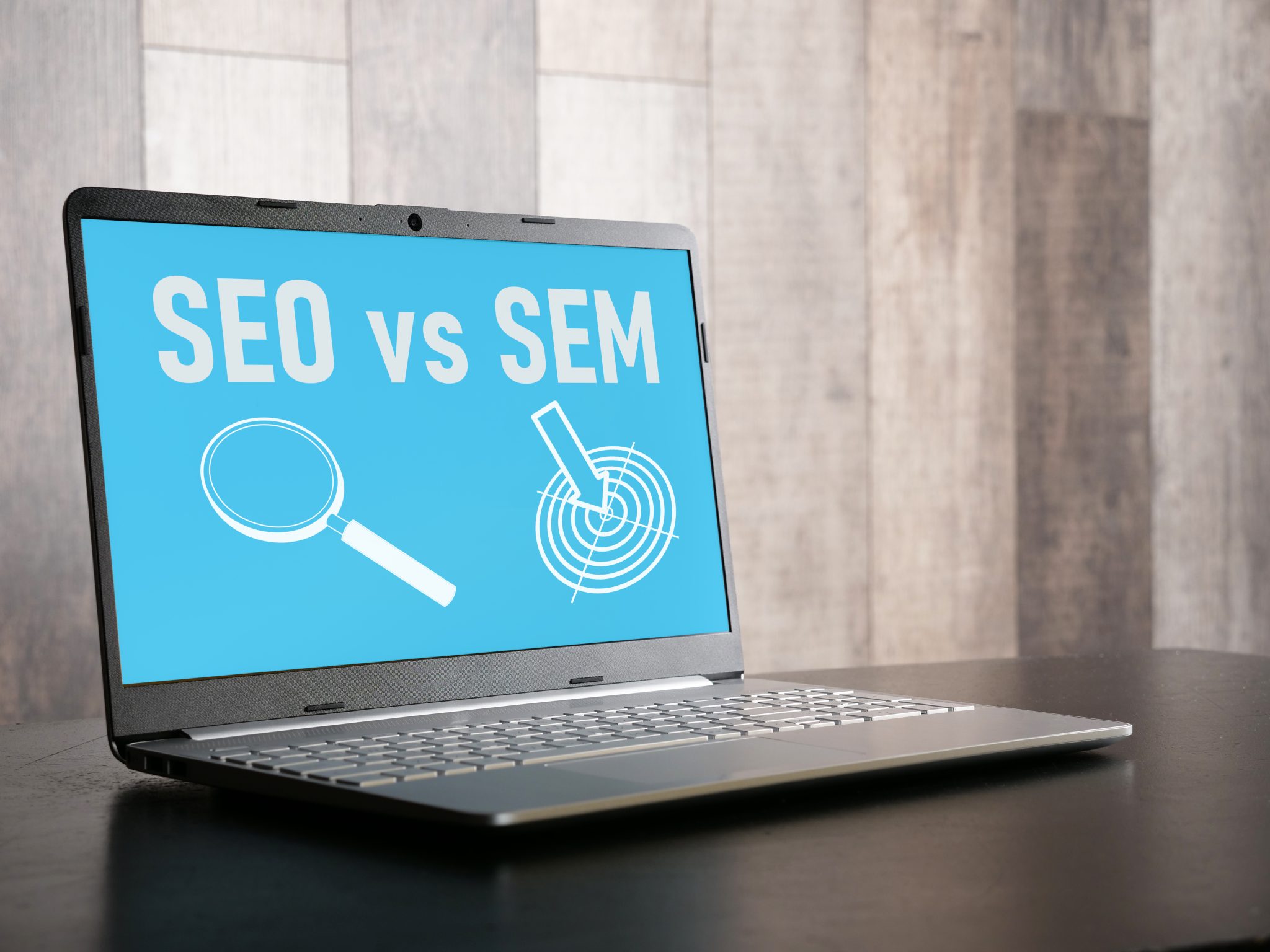What’s the Difference between SEO and SEM
If you’re considering which digital marketing strategy to implement, you might be weighing SEO against SEM. With SEO dedicated to bolstering organic search presence and SEM expanding reach through organic and paid tactics, knowing which to prioritize can be challenging. This guide navigates the SEO vs SEM landscape, illustrating their unique functions without pushing a one-size-fits-all solution.
Key Takeaways
- SEO is a long-term strategy aimed at organic search rankings through keyword research, on-page optimization, and building backlinks, while SEM is a broader approach that includes paid tactics to enhance visibility on SERPs.
- SEM enables immediate visibility and reach through targeted PPC campaigns, while SEO fosters gradual brand credibility and organic traffic growth over time, making them suitable for different strategic goals and timelines.
- Integrating SEO and SEM requires a balance of immediate paid campaign results and long-term organic growth, necessitating careful resource allocation and continuous optimization to maximize overall digital marketing effectiveness.
Decoding SEO and SEM: The Essential Divergence

SEO and SEM are intricately connected as they form part of a comprehensive digital marketing strategy. SEO centers on boosting a website’s position in the organic search results, while SEM incorporates both optimization techniques such as SEO and paid tactics such as PPC to advance visibility, rankings, and performance on Search Engine Results Pages (SERPs). Though distinct from each other, these strategies go hand-in-hand when aiming for success with one’s Digital Marketing effort.
Understanding SEO: Beyond Organic Search Results
Search engines, keyword research, and organic search rankings are the fundamental elements of SEO. Optimizing a website’s content to enhance its presence in these realms is what drives successful optimization efforts. Technical SEO ensures all pages are accessible for crawlers and optimizes page loading speed with a sitemap and appropriate redirects.
On-page SEO takes this by assessing target audience’s needs according to their searches – also known as ‘search intent’, making sure that the quality of webpages aligns accordingly for best results. On the other hand, off-page SEO concentrates on acquiring trust from external websites through backlink-building activities, increasing authority signals attributed to it.
Demystifying SEM: The Paid Search Landscape
Search Engine Marketing (SEM) is a concept that involves various paid advertising strategies such as PPC and SEM SEO in order to increase visibility on search engines. Implementing one type over the other relies heavily on which keywords are targeted for optimization and the desired outcomes. A successful pay-per-click campaign consists of an enthralling headline/description plus a strong call to action, all directed towards precise ad groups with tailored landing pages for each group.
In any event, monitoring these campaigns requires examining different aspects like keyword targeting accuracy or ROI associated with particular ads copy written content quality.
Crafting a Digital Marketing Strategy with SEO and SEM

A comprehensive digital marketing plan should include both SEO and SEM. SEO advances digital marketing by optimizing website visibility to clients and increasing organic traffic flow. Paid search ads give your products/services an exposure boost. Goals, budgeting constraints, and project deadlines will affect the balance between efficiently incorporating these two facets of a successful strategy into one cohesive plan.
When SEO Takes the Lead: Long-Term Growth and Organic Traffic
For long-term growth and building organic traffic, an SEO strategy is what one needs. Understanding your goals and who you are targeting for content should be in place before any other step to get the most out of it. Also included would be a complete plan with regular updates to help boost authority on search engines and create visibility among users. Keyword research is also necessary to fully utilize the benefits of this optimization method. Regarding online presence, SEO plays a huge role when reaching potential consumers or customers looking for solutions related to their specific queries online without requiring too much effort from yourself.
The Advantages of SEM: Immediate Impact and Targeted Reach
SEM is the ideal option for businesses aiming to quickly boost their presence and conversions. Paid campaigns with SEM are notably faster than organic tactics, which can be highly advantageous for startups or companies that require quick gains from marketing activities in order to prompt Business expansion.
When it comes to targeted reach through digital marketing techniques, google ads used in an SEM approach enable organizations to focus on particular characteristics within their paid promotions, such as demographics, geographic areas, habits, and keywords. This guarantees that adverts achieve precisely who they wish them to without fail.
Keyword Conundrum: Navigating Keyword Research for SEO and SEM

The keyword research process is crucial for both SEO and SEM, as it allows marketers to determine the optimal terms to optimize organic search rankings and establish paid search campaigns, which is essential in driving targeted traffic toward websites.
Tailoring Keywords for Organic Search Success
Keyword research consists of various elements to optimize SEO success. These include identifying relevant, high-traffic, and low-competition keywords, understanding the searcher’s intent, ensuring the content relates to their query, and increasing organic search rankings on other search engines. To identify words supporting organic ranking goals, one should consider searching for gaps in your existing content topics, utilizing trend data analysis, and studying competitor websites’ strategies closely. Long-tail keywords also provide a more specific way to increase relevance, which benefits users looking for answers and those who own sites with desired results appearing higher up in SERP (Search Engine Result Pages).
Precision Bidding in PPC Campaigns
PPC campaigns rely heavily on keyword research. Different tools, such as UberSuggest and Google’s Keyword Planner, can be beneficial to match the desired objectives for targeted ads that reach their intended audiences. Various bidding strategies are available, too, including manual CPC and advanced automated options like CPM, Target ROAS, or Maximize, all of which have a vital role in precise bids aimed at achieving optimal results through paid search endeavors. Performance tracking is no less crucial, either. Key metrics within SEM need close monitoring (CTR Conversion rate, Quality score, etc) in order to determine success levels achieved by these sorts of campaigns.
The Financial Factor: Comparing Costs of SEO vs SEM

When planning your digital marketing strategy, it is essential to factor in the budget and desired objectives. SEO entails expenses such as website optimization, content generation, and backlink building. SEM takes this one step with additional costs for constructing and managing PPC campaigns. Thus, both elements of a comprehensive marketing strategy (SEO & SEM) can prove expensive but are essential investments for success online.
Investing in SEO: A Look at Long-Term Value
SEO investment yields potential returns for a business over the long term. Through consistent brand promotion, visibility enhancement, and equity building, businesses can generate additional revenue from SEO efforts in three to six months, with continual improvement taking up to one year. Depending on project scope and company size, investment costs may range between $500 and $7500 per month, where professionals are recruited alongside investing in tools & software designed explicitly for optimization purposes. There could be significant rewards if capitalizing on this marketing strategy works well!
Budgeting for SEM: Understanding Ad Spend and ROI
The price of SEM is determined by a number of aspects, including Quality Score, AdRank, click-through rate (CTR), advertisement strategy, and industry cost-per-click averages. A typical expenditure for these campaigns can range from $4,000 to $20,000 monthly, with management fees estimated at 15% up to 30%.
To track the return on investment in this area, you should monitor important metrics like clicks, impressions, ad spend, and CTRs while calculating total revenue divided by overall expenses.
Quick results are often achieved through doing SEM. Within one month, businesses see significant improvements, making it an attractive marketing option. For extensive services covering mobile ads plus display promotions, firms will pay around 80k annually or even more if needed. The starting fee percentage lies between seven percent and fourteen percent based upon factors such as customer acquisition cost, quality score, etc., along with advert excellence standing out amongst those mentioned earlier.
SEO and SEM Timelines: Patience vs. Promptness

SEO and SEM have their timetables for delivering results – while SEO may take several months or even years of work before seeing any reward, SEM can yield measurable success in a much shorter timeframe. Typically, days to weeks.
Building SEO Foundations: A Gradual Climb to the Top
One should ensure their SEO and SEM goals align with the exact keywords used for both. Continuous investment of effort is needed to improve rankings and traffic. Usually, visible outcomes manifest themselves after 3-6 months, but steady growth could take up to a year. Optimizing websites and landing pages through these two techniques helps boost visibility online and drive quality leads.
Speed of SEM: Quick Wins and Adaptable Campaigns
SEM campaigns are well known for their ability to produce rapid results, often within a month, and offer companies instant success. Examples include Capterra and Etsy, as mentioned in Forbes, or LinkedIn pieces that successfully marketed items like sneakers or socks. Setting up an SEM campaign includes several actions, such as deciding objectives, picking the best channel through keyword research, developing a budget plan, and optimizing landing pages with customized ads. To boost performance outcomes, businesses should focus on restructuring keywords correctly when structuring the campaign, using ad extensions, too, while having useful landing page content, and not forgetting to test multiple versions, which will help refine your approach better (A/B Testing).
Integrating SEO and SEM into Your Marketing Mix
By incorporating SEO and SEM into a unified marketing plan, businesses can gain the most traction, with their message consistent over all platforms. It encourages organic traffic growth and provides direct visibility and directed reach using both methods in harmony.
Harmonizing SEO and PPC for Maximum Exposure
To maximize exposure, the recommended approach for integrating SEO and PPC consists of adhering to search engine optimization best practices when creating paid campaigns in order to avoid any risks associated with self-sabotage. Combining both strategies allows businesses a more significant amount of visibility across multiple results pages, which can result in increased sales opportunities over short and long-term periods alike. When running an SEO & PPC campaign concurrently, keyword data from each field must be appropriately combined in order to identify high-performing keywords within your marketing strategy and ads found on Search Engine Results Pages (SERPs).
Balancing Act: Managing SEO and SEM Together
A successful digital marketing strategy should be based on an equilibrium between SEO and SEM – it is vital to clearly comprehend the target audience, define objectives, devote resources wisely, and ensure that user experience isn’t compromised. To properly manage both approaches together requires matching goals with relevant keywords, optimizing websites/landing pages, and taking advantage of different SEO tools to maximize visibility in search engine results while generating more leads. Companies may find themselves challenged by regularly altering algorithms or lack of AI capability, which can slow down outcomes for their SEO endeavors. Not forgetting this could all be complicated due to other factors, such as intense competition within Digital Marketing strategies today.
Summary
SEO and SEM are essential in digital marketing, so they must be utilized properly in a strategy. Both search engines offer unique advantages – with their focus on long-term organic growth, SEO provides stability while the targeted reach of SEM yields immediate results. Combining these two approaches enables greater visibility and ensures consistent messaging across all channels for optimal success within digital marketing.
Frequently Asked Questions
What is the difference between SEM and SEO?
SEO and SEM are two strategies focused on gaining traffic from search engines. SEO concentrates exclusively on organic methods of reaching users, while SEM combines these with paid search listings. Thus, by using both approaches simultaneously one can acquire visitors through their SEO plans and utilize the additional route offered by paid searches.
Is SEO or SEM more important?
Overall, both SEO and SEM are essential to the search marketing process. To get maximum results in the most efficient way possible, it is recommended that you use SEO for long-term development and incorporate SEM strategies into your strategy, thereby providing quicker rankings.
Is SEO or SEM paid?
SEO concentrates on organic traffic, while SEM involves paid advertising. Consequently, utilizing SEM requires payment of some kind.

